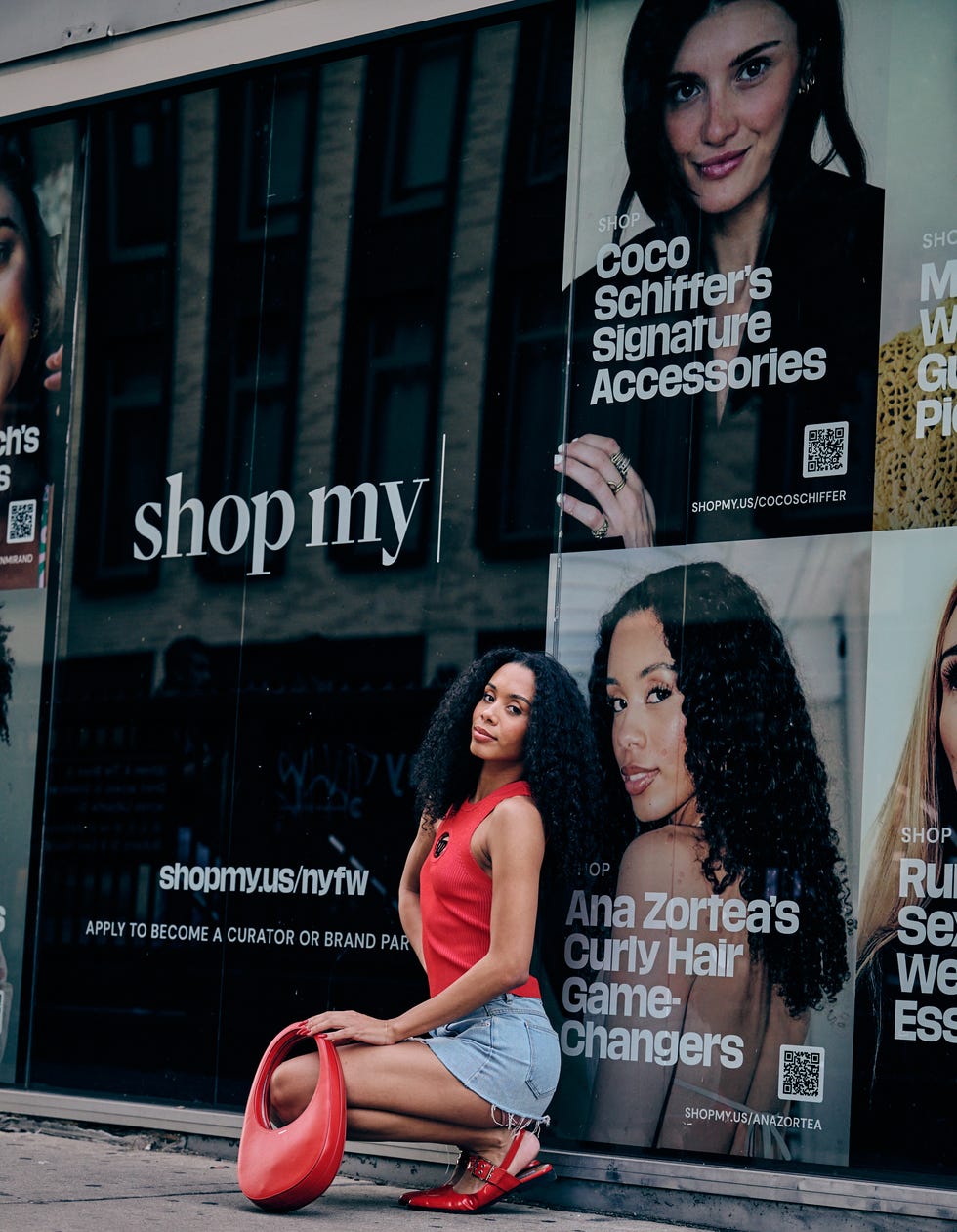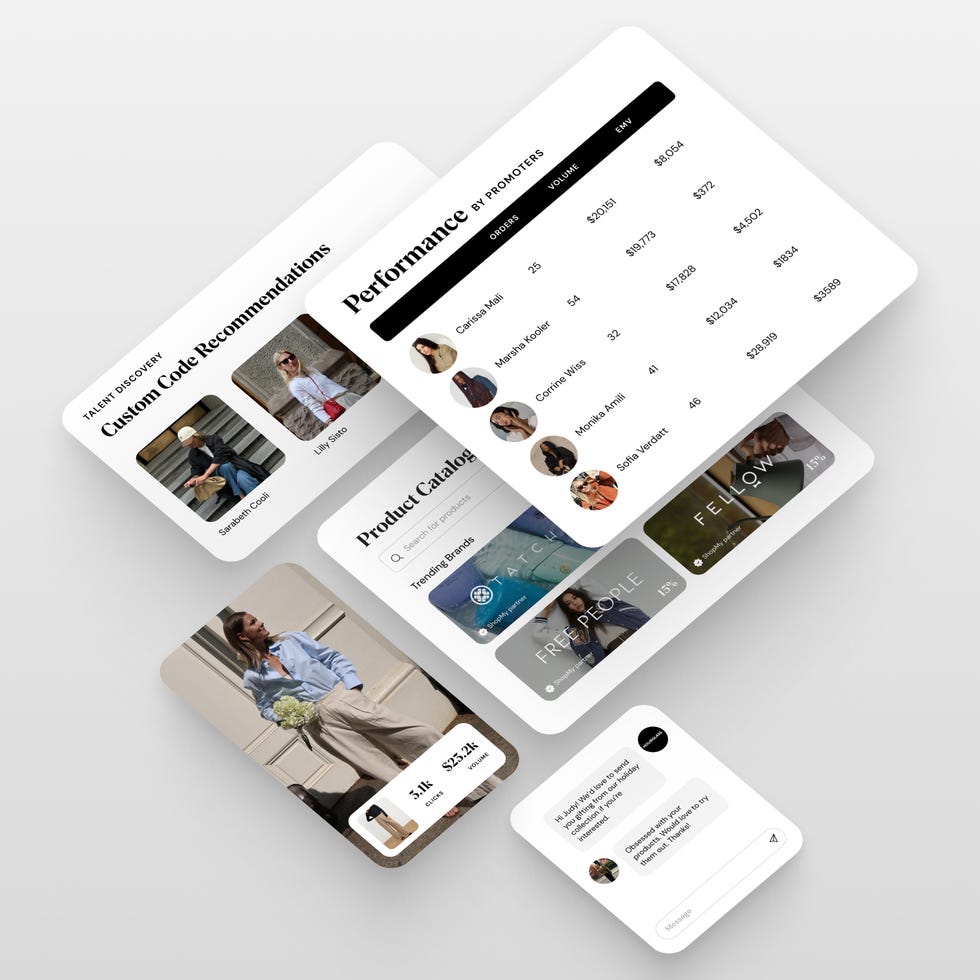Want to Know Where Your Friend Got Her Shoes? Click the Link in Bio

In the age of social media, phrases like “link in bio,” “like and subscribe,” and “everybody’s been asking,” have been seared into our vocabulary, especially if you follow influencers with massive online followings. However, a fan base is no longer a prerequisite for sharing and profiting off of your own curated recommendations.
Most probably started noticing affiliate links in the early 2010s, when RewardStyle, now known as LTK, entered the scene and allowed bloggers to earn money from their product recommendations through commissions on every sale. More than two decades later, the company counts on 40 million monthly users and drives $5 billion in annual retail sales through its platform. A newer player is ShopMy, which launched in 2020, and is now valued at $410 million after it announced it had raised $77.5 million earlier this year. According to ShopMy, its affiliate rates range anywhere from 4 to 50 percent.
In 2025, influencer-driven shopping behavior is a natural result of how much time we’re spending on our phones. Online personalities like Leandra Medine Cohen, Tamu McPherson, and Tinx are helping shape what we buy, all within the palms of our own hands. A 2024 Pew Research Center survey found that 62 percent of U.S. adults on TikTok rely on the app for product recommendations. Looking specifically at female users between the ages of 18 to 49 on the platform, that percentage jumps to 74 percent.

Many influencers rely on “curation” to promote their storefronts.
Now, the affiliate link landscape is changing yet again. LTK, ShopMy, and Amazon Storefront currently allow anyone to easily create commissionable links they can share, regardless of platform size. Meaning, you can click a link to a product recommended by Meghan Markle just as easily as you can one from your co-worker. Many of these platforms are technically invite-only, but you can apply to join. On ShopMy, you can easily be referred by someone already on there.
Bryn Poulos, a New York City-based fashion consultant with just under 4,000 Instagram followers, has been on ShopMy for a little over six months. She was encouraged by her friend, jewelry designer Jennifer Fisher, to join, despite not having a major Instagram following of her own. Originally, she did so in an effort to “get a better hold on finances,” feeling inspired by personal finance creators like Tori Dunlap (@herfirst100k) and Haley Sacks (@mrsdowjones), to invest, save, and develop a new revenue stream. “At first, you’re not really making much money...but if I can really build out my investments through this platform, that’s great,” Poulos says, before adding, “working in fashion, your friends are going to ask you for links all the time anyway.”
Poulos familiarized herself with the platform, and started generating commissionable links to share. “It was mainly things I was wearing,” she explains. “Then I realized you didn’t have to be wearing an outfit to promote it. You could just post the links with the picture of your edits, like you would if you’re doing a magazine page or a gift guide. That opened a lot more doors.”
“Why not make the most of the influence that I already have in a more intentional way?”
It didn’t take long for her to climb the platform’s tiered system, which rewards users who drive strong traffic and order volume, to the very top (dubbed “Icon”). This then brought gifting and brand partnerships (she’s worked with Coach on two promotions so far). Beyond sharing links and curating products on her profile, Poulos has also found success in using a platform like ShopMy for other aspects of her professional life: As a personal shopper and stylist, she can compile products for her clients there. “It’s one link that they click, and everything’s in one place,” she says.
The affiliate link appeal expands beyond the fashion industry, too. Take Jess Gray, a sports business executive in Detroit with just under 3,000 Instagram followers, who opened a LTK account almost three years ago. Like Poulos, she figured she should find a way to streamline the process of sharing links to products her friends kept asking her for. She’ll post things she loves, as well as things she knows could work for a variety of lifestyles. Recommendations can include the comfiest work-from-home leggings, “or, if I’m traveling, what I’m packing or what I use on the road,” she says. But there’s a clear appetite from her peers: “The feedback I get is, ‘I want more.’”
For now, most of the clicks on Gray’s links are coming from people she knows. “But it’s growing where there are people that don’t know me and might only have interest in me for certain things that I post,” she explains. She herself has followed people on social media that she first discovered on LTK, and vice versa; some are full-time content creators, others are like her, sharing commissionable links on the side, whom she wants to support. (Friends have done similar for Gray, too: “My best friend will be like, ‘Post this on your LTK, so I can buy it. I can click your link, and you get a couple of dollars.’”)
This personal element brings an authenticity to recommendations, one that we may no longer feel from full-time influencers once they blow up. According to Dr. Jay Sinha, associate professor at the Temple University Fox School of Business and Management, Gen Z, especially, engages with micro-influencers (accounts with between 10,000 and 100,000 followers) more than celebrities or professional influencers because they prize “real people” who take the time to respond to questions. Plus, with Gen Z, they’ve grown up on the internet. “It feels more instinctual to just share a link,” says Sinha.

ShopMy’s app interface.
Sky Howard, a program manager in Washington, D.C. with around 2,000 Instagram followers, started on ShopMy and LTK as a consumer. Once she started posting more recommendations on her personal social media accounts, she realized she could take advantage of these tools, too. “I was already sharing links with my friends directly, and with followers and other people who follow me that were genuinely interested in what I was wearing,” Howard says. “I figured, why not make the most of the influence that I already have in a more intentional way?” Howard describes what she’s earned from affiliate links as “play money”—nice to have, but not enough to make a living. “I’m open to the possibilities of where content creation and making money online can take me,” she adds.
Lindy Segal, a New York City-based writer and editor with 4,000 Instagram followers, joined ShopMy in February 2022, through a referral from a colleague. “As a freelancer, I’m always looking to see how I can have a side hustle,” she says. She started “testing the waters” with beauty recommendations, but didn’t actively use the platform until she launched a Substack newsletter called Gatekeeping, that now has around 2,000 subscribers, that winter.
“I always say it’s a shopping-ish newsletter—there are newsletters that go out that have no shopping links at all, but then there are some that have a bunch,” Segal says. “I wanted to have affiliate somehow.” ShopMy was the most straightforward way to incorporate commissionable links into Substack. (She’s since also opened an Amazon storefront.) Segal thinks it’s mostly friends who buy products through her commissionable links, but she’s heard from strangers, both on Instagram and Substack, who have purchased from her as well. “I had a friend Venmo me $10 randomly,” she says. “She was like, ‘I bought these Adidas you recommended. You deserve a kickback.’”
She compares the appeal of nano- and micro-influencers to what she calls “the original influencing”: customer product reviews. “We all read the reviews first,” she says. Howard agrees: “People believe that they’ll get the honest truth about a particular item, similar to a review on a website. I’m the type of person that will read every single review before purchasing something.” So, why not trust the review of someone you know IRL?
“For a long time, people wanted to shop through celebrities or influencers, but now, they’re looking at people they know and trust,” Poulos says. Plus, at the end of the day, “we all have influence,” adds Gray. It’s just the scale that varies.
elle




